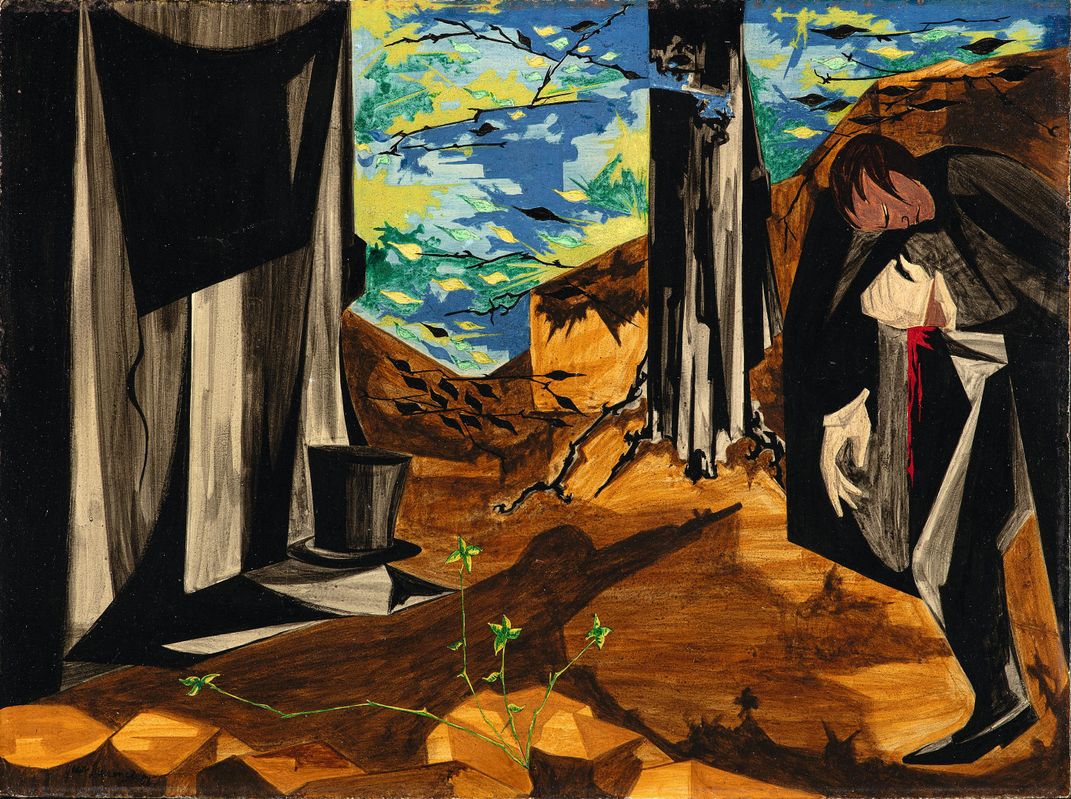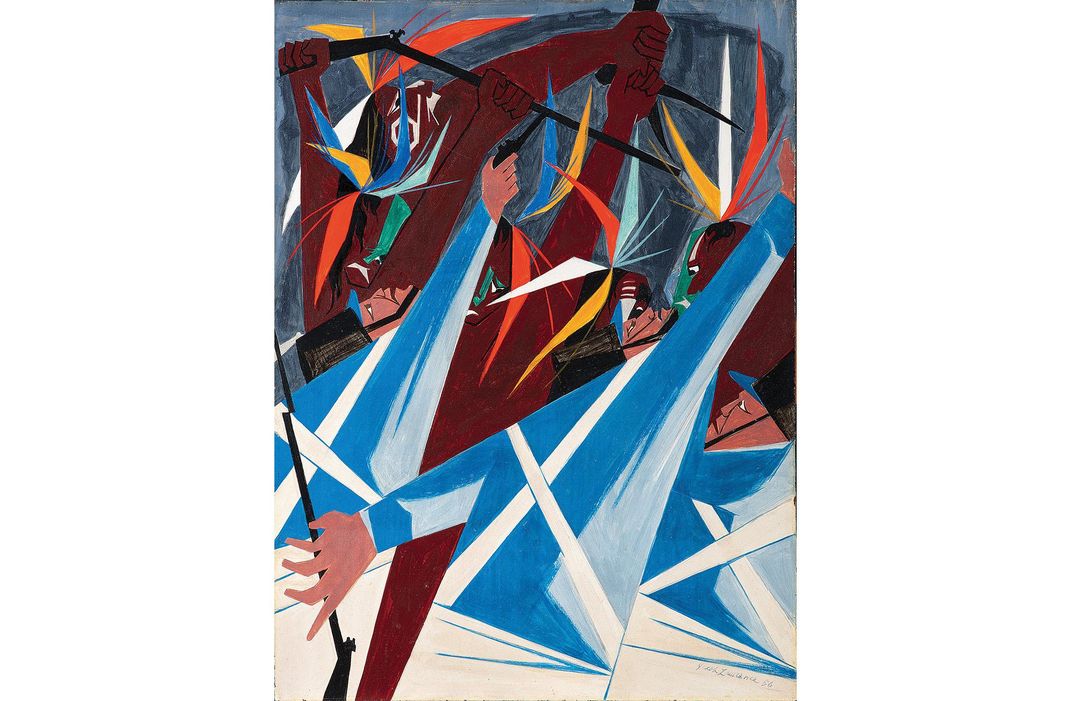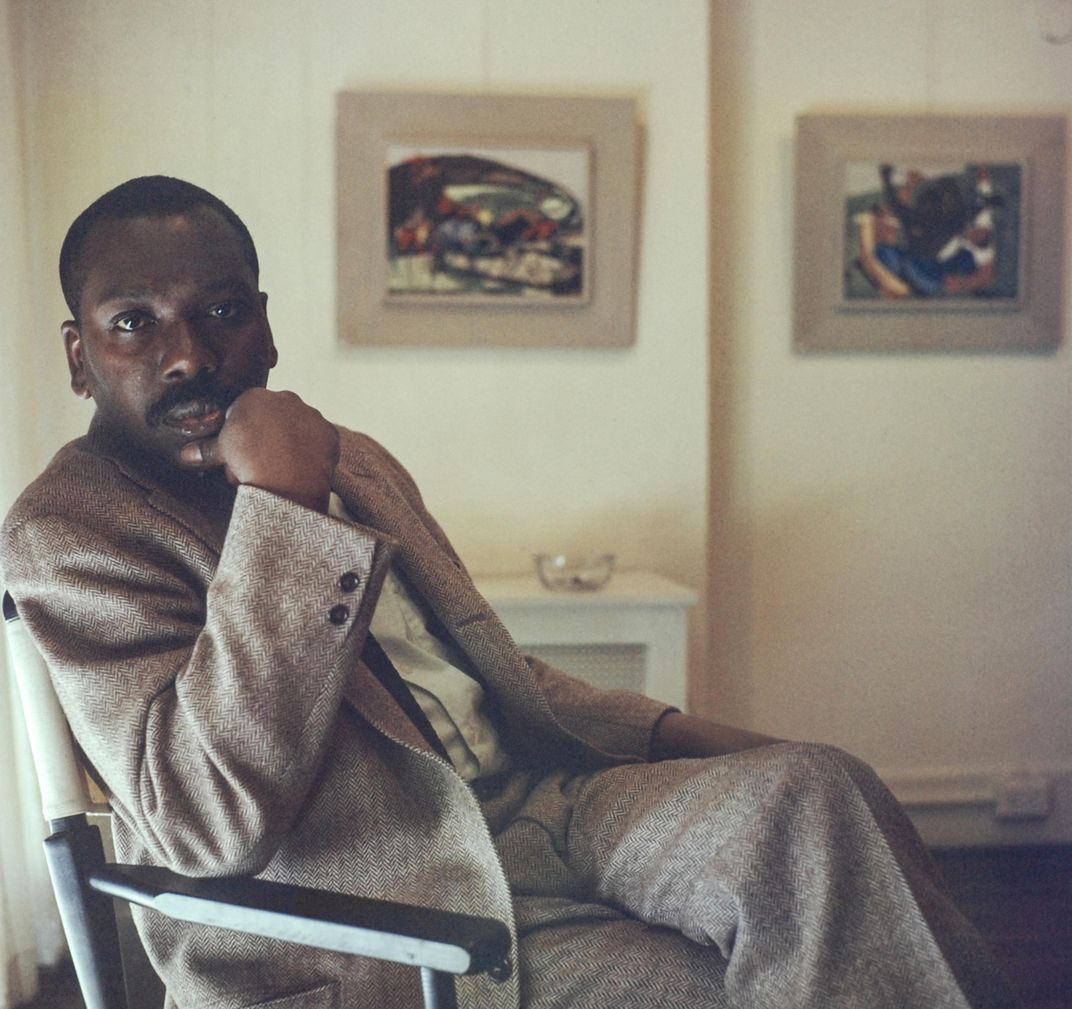Jacob Lawrence’s ‘Struggle’ Series Prepares to Be Seen by a New Generation
For the first time in decades, view a major reimagining of the battles that made the nation
/https://tf-cmsv2-smithsonianmag-media.s3.amazonaws.com/filer/20/73/2073bf66-e72a-4f15-a647-ab759809f9dc/jun2020_a20_prologue.jpg)
A modernist master and black history’s pre-eminent visual storyteller, Jacob Lawrence completed his most famous set of paintings in 1941, when he was just 23. A sweeping view of African-Americans’ mass exodus from the Jim Crow South—laid out over 60 color-saturated tempera panels—his “Migration Series” is still considered one of the major achievements in 20th-century American art.
But another series by Lawrence, equally ambitious in scope and radical in vision, had been largely forgotten until this year, when the Peabody Essex Museum, in Salem, Massachusetts, organized a new traveling exhibition, scheduled next for New York’s Metropolitan Museum of Art. It is the first showing in more than 60 years of Lawrence’s “Struggle: From the History of the American People.”
These 30 hardboard panels, each 12 by 16 inches, cover the period from the American Revolution until 1817. Lawrence, often looking through the eyes of marginalized characters, takes on storied events such as the Boston Tea Party, as well as less celebrated episodes, including slave rebellions and the long war on Native Americans. But despite the seemingly universal appeal of his subject matter in a country long enamored of its own history, when Lawrence completed the project in 1956 “Struggle” inspired little enthusiasm among buyers.
“He was at the height of his powers—teaching at Pratt, exhibiting—so the reception was interesting,” says Peabody Essex curator Lydia Gordon. “I think the general public didn’t know what to do with it. He’d gone beyond the boundary of how he was defined and understood, as a black artist depicting black history.”
Over the decades, the “Struggle” panels were dispersed among private collectors. Reassembling them took years of detective work—and luck. (Panel 19 resurfaced at an auction when the museum was readying the show.) And while five panels remain missing, curators hope the exhibition might inspire their owners to come forward.
The series tells a compelling story about the messy work of building a democracy—and the people, especially women, blacks and Native Americans, left out of historical narratives. “We have become the country we are because of conflict,” Lawrence said in 1992 (he died in 2000), “and I always say that conflict can be very beautiful in what comes out of it.”
Editor's note: An earlier version of the caption for Panel 21 said that U.S. forces had defeated Shawnee Chief Tecumseh at Tippecanoe. While Tecumseh's forces were there, he was not present during the battle.
/https://tf-cmsv2-smithsonianmag-media.s3.amazonaws.com/accounts/headshot/amy.png)

/https://tf-cmsv2-smithsonianmag-media.s3.amazonaws.com/filer/fc/c5/fcc50423-998d-4b19-92a9-a8630df98df0/jun2020_a17_prologue.jpg)


/https://tf-cmsv2-smithsonianmag-media.s3.amazonaws.com/filer/ca/26/ca266199-dc96-46d3-8334-907955ef546f/jun2020_a18_prologue.jpg)
/https://tf-cmsv2-smithsonianmag-media.s3.amazonaws.com/accounts/headshot/amy.png)